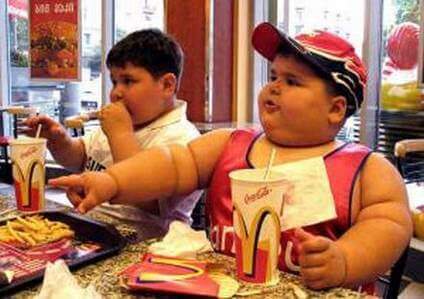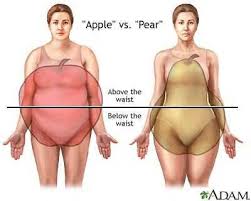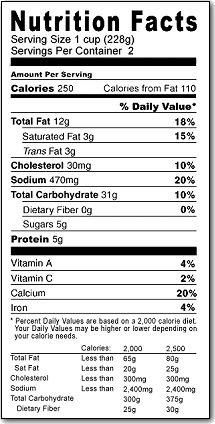Obesity the epidemic is real and encompasses the majority of today’s health concerns. It is a serious problem and we will be discussing why it is such a concern and things that may help. Obesity (defined as having a body mass index of greater than 30) has more negative health consequences in the U.S. than smoking, drinking, or poverty. Nearly 70% of the U.S. population suffers from obesity or is overweight. Obesity is the 2nd leading cause of preventable death in the U.S. and claims the lives of more than 300,000 Americans each year.
Increased Risks

Obesity the epidemic increases the risk of more than 30 conditions:
- Hypertension
- Type 2 diabetes
- Coronary artery disease
- Obstructive sleep apnea
- Gall bladder disease
- Fatty liver
- Halitosis
- Cancers of breast, prostate, colon
- Stroke
- Asthma and other respiratory problems
- Infertility
- Pregnancy and other peri-partum conditions
- Depression
Sadly, 1/3 of U.S. children are overweight and by 2010 one-half of the children are expected to be overweight or obese. One-third of American children born in 2003 will develop diabetes! The obesity trends in the US over the last 20 years are astounding.
View the obesity the epidemic trends in the US
What happened?
After viewing the above trends, we have to ask ourselves how we let this happen. How did we get in this shape and create obesity the epidemic? I think it is obvious that Americans are definitely eating more food due to the increased portion sizes at home and in restaurants. We also eat more sugar, consuming nearly 150 pounds of sugar per year and nearly 40 gallons of soda. Soda in itself has between 12-15 teaspoons of sugar per can. We also exercise less and watch more TV. When we were young, we went outside to play, now a majority of the kids play video games and chat on their computers and cell phones.
Your Body Mass Index
Become aware of what your weight status is. The following is an example of a Body Mass Index Chart. To determine your BMI

Your Body Shape – Apple or Pear

If you have the body shape of an apple you are largest around the middle and tend to have excess abdominal fat. This excess abdominal fat can lead to a greater risk of high cholesterol, high blood pressure, heart disease, stroke, and Type 2 diabetes.
If you have the body shape of a pear you tend to be largest around the bottom having excess fat stored around your hips or thighs. This area of excess fat tends to lead to a greater risk of osteoporosis.
Another way to determine if you pose a greater risk to obesity the epidemic and disease is to measure your waist and determine how much excess abdominal fat you have. Men with a waist size larger than 40 inches and women with a waist size larger than 35 inches have a greater risk for developing obesity-related conditions, such as Type 2 Diabetes, high blood cholesterol, high triglycerides, high blood pressure, and coronary artery disease.
What YOU can do – Breakthrough Weight Loss
You can start a diet. There are many diets out there, Weight Watchers, South Beach Diet, Atkins, The Zone, Mediterranean, etc. They all work when you participate and make the required dietary changes! The problem is, when people stop participating, they tend to gain their weight back. I personally dislike the word diet. I would much rather think of it as choosing to live a healthier and leaner lifestyle. We all need to learn to make better food choices. In order to do that, Rallie McAllister MD developed the Breakthrough Weight Loss System to teach us to look at food as fuel for our bodies. Food should contribute to our nutritional status and overall health.The Breakthrough Weight Loss Program focuses on the following:
- Carbohydrates -Simple and Complex
- Protein
- Fats – Good, Bad, and Ugly
- Fiber
- Water
Each is a necessary component of a nutritious diet, but the balance of carbohydrates, protein and fats are critical when wanting to lose and maintain weight.
Carbohydrates provide a readily available, easily accessible form of energy for the body and brain. There are 2 types of carbohydrates – simple and complex. Simple carbohydrates have bonds that breakdown quickly releasing sugar rapidly into the bloodstream producing a surge of blood sugar and insulin. This provides a rush and crash of energy. Examples of simple carbohydrates are cookies, cakes, candies, chips, crackers, refined breads, pasta, rice, molasses, maple syrup, and corn syrup. Complex carbohydrates have bonds that allow sugar molecules to be released slowly into the bloodstream. This generates a slow, steady rise in glucose and insulin levels leaving you without a rush and crash of energy but large peaks of energy over several hours. Complex carbohydrates also provide a feeling of fullness and trigger production of serotonin in the brain which is a mood-enhancing neurochemical. Foods high in complex carbohydrates are high-fiber foods, fruits and vegetables, whole grain foods, breads, pastas, and cereals.
Protein makes up about ¾ of your body weight. Protein is a component of bones, skin, teeth, cartilage, organs, and blood. It is also a catalyst for millions of life-sustaining biochemical reactions daily. Our immune system is almost made entirely of proteins. Sources of protein are poultry, eggs, dairy, fish, legumes, red meat, nuts, seed, and whole grains.
The upside to fats. Fat is an important energy source that also promotes a feeling of fullness. Body fat cushions and protects internal organs and keeps our skin smooth and supple. It also stores and circulates the fat soluble vitamins A, D, E, and K. The downside to fats. Fats are twice as fattening as carbohydrates and protein. Fats promote obesity, heart disease, and certain types of cancer when eaten in excess. The more fat you eat, the more you want to eat. Dietary fat triggers a release of grehlin, a hormone that triggers more cravings for fat.
Fiber is a carbohydrate, but isn’t really a nutrient. Fiber is Indigestible by humans. Fiber slows down our eating and reduces our calorie intake because it is bulky and filling. It also reduces the risk of obesity, diabetes, heart disease, cancer, and gastrointestinal disorders. Most of us only consume about 11 grams of fiber per day. You should aim for 28-35 grams per day for optimal health. Sources of fiber are whole plant foods (animal foods are fiber-free), whole fruits and vegetables, legumes, nuts, and whole grain products. The refining and processing during manufacturing removes fiber and many nutrients from foods.
Water is not a nutrient but is vital to life. Water comprises 2/3 of body and 75% of our brain. Water lubricates joints and cushions organs. It is also critical for our immune function. Water reduces the risk of disease. Minor dehydration leads to irritability, poor concentration, fatigue and weakness. Drink up and work toward drinking 8 glasses a day!
Determine Your Daily Calorie Intake
Women should eat 11 calories per pound and men should eat 13 calories per pound. If you want to weigh 140 pounds and you are a female you should eat 1,540 calories per day. It is also recommended that you eat 40-50% carbohydrates, 30% protein, and 20-30% fat.
140lb is your desired weight x 11 = 1,540 calories per day
200lb is your current weight x 11 = 2,200 calories per day
If you begin to eat 1,540 calories per day, you will eventually weigh 140 pounds. How weight loss works: 3,500 calories = 1 pound. If you create a caloric deficit of 500 calories a day, which means cutting down the calories you eat per day by 500 calories, you will lose 1 lb per week. If you create an additional calorie deficit of 250 calories a day with 30 minutes of moderate-intensity exercise, you will lose 11/2 lbs per week. Exercise burns fat and expends calories, increases muscle mass,
boosts your metabolic rate, improves mood and energy levels, regulates blood sugar and insulin, promotes better sleep, and reduces you risk for dozens of diseases! Aim for at least 30 minutes of moderate-intensity exercise 5 days a week and at least 20 minutes of resistance exercise 2 days a week. Don’t forget to warm up and cool down before you exercise.
You also need to know that each gram of carbohydrate has 4 calories, each gram of protein has 4 calories, and each gram of fat has 9 calories. Start reading nutrition labels to determine grams of Carbohydrate, Protein, Fat, and Fiber.
Being Successful – Obesity the Epidemic
You must decide to decide to change your behaviors, take action, and commit
to the program. Believe in yourself and the program you design! Your health, and your children’s health depend on it. To obtain nutrition info and record your daily intake check out Food Data.
Develop One Good Habit

According to Zonya Foca RD, the author of “Water with Lemon” and the focus and the “Power of One Good Habit” you can change your weight and your life: Below are a list of Zonya’s Eight Habits to Change your Weight and your Life!
- Drink Water and think before you drink anything else
- Include Breakfast
- Eat Often and eat a fruit or vegetable each time.
- Tame your sweet tooth.
- Find the Fat
- Replace processed foods with close to the farm foods
- Eat only until you are not longer hungry then stop
- Everyone once in a while eat outside the guidelines
- Quit Smoking if you smoke
- Exercise
- Excessive Alcohol Use
Learn more about Zonya and her quest to assist America with losing weight. It is a story about weight loss that is very inspiring and eminates how good habits can change your life! If you feel that you need some motivation and want to make lifestyle changes, I highly recommend our online In.FORM Program to help you with managing your weight, restoring gut health and metabolic syndrome.
Enjoy your Journey Towards a Thinner Healthier Tomorrow!
References: CDC, Zonya Foca RD
